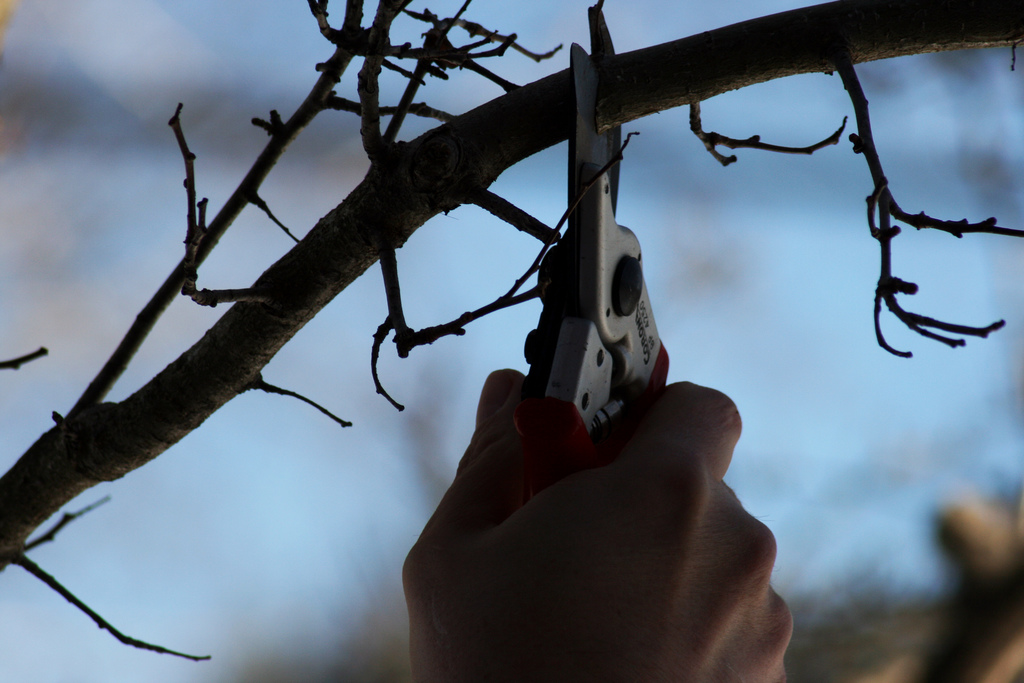As A.P.E. leaders, we know all about starting things— it’s intuitive and natural for us to generate ideas, groups, and communities— what’s harder for us is thinking proactively about when we need to stop things we’ve started.
Apostolic environments are potent seedbeds of entrepreneurial activity, but a side effect of this type of leadership is that it can also breed increasing amounts of organizational complexity. In this situation, A.P.E. leaders have at least two choices. Sometimes, what we need is greater levels of integration— strategies that unlock collaboration between formerly disparate elements of our system. However, often, what’s really needed to accelerate movement isn’t endless INTEGRATION but ruthless FOCUS.
John 15 is a classic text for spiritual formation and for good reason! As an A.P.E. leader often bent on activism, I experience an almost constant need to hear Jesus’ exhortations to abide in his love and remain connected to him as the true vine. Yet, John 15 isn’t merely a text about spiritual formation—it is undoubtedly also a text about missional fruitfulness. Right at the beginning of his teaching, Jesus makes an explicit link between pruning and fruitfulness: “Every branch that does bear fruit he prunes so that it will be even more fruitful.” (v. 2). In Jesus’ kingdom, pruning is both the result of and prerequisite for fruitfulness.
Though God is the ultimate gardener, as A.P.E. leaders, we can join God’s initiative and be proactive about the discipline of pruning. Here’s a few things I’ve been learning as we’ve sought to embrace this invitation on our team.
- It’s critical we consider the health of the ENTIRE ORGANISM. While pruning can feel costly to a given branch (i.e., program, ministry, etc.)—particularly when WE started it(!)—we must recognize that more important than the health of a given branch is the fruitfulness of the ministry as a whole. Too often, leaders fail to consider the health of the entire ecosystem, opting instead to think only of its individual parts. When we do this, it’s easy to become overwhelmed by the potential pain of pruning a part, and miss the threat that organizational congestion poses to the environment as a whole.
- We must have faith in the POWER OF MARGIN to bear incredible fruitfulness for the Kingdom. Whether Moses in the wilderness, or Jesus’ time in “lonely places”, great leaders prioritize the power of margin in their own lives, and surely the same is true for the ministries we lead, especially if they are filled with supercharged A.P.E. leaders. Imagine what might happen if instead of filling their plates with expectations and requirements aimed at ensuring quality (control), we gave our top leaders a steady diet of encouragement to innovate— margin to hear from God and respond to his word? The best way to quench a fire is to cut off its supply of air; conversely, if you want a fire to spread, all it needs is access to the wind.
- When we’re considering where to make cuts, the CENTRALIZED systems we control should be first on the block. If what we truly desire is a multiplicative movement, it’s likely that the first place we should consider cutting is in the middle—where systems and programs have had the chance to mature (perhaps past the point of maximum fruitfulness). Rather than an excuse to call for a hard stop on experimentation on the fringes, pruning is an invitation to the consider whether the “tried and true” core is still as fruitful as we might think it is.
- As point leaders, we’ll no doubt be aware of some potential cuts, but when discerning God’s invitation to pruning, it’s critical that we EMPOWER THE VOICES of those we lead to help us pinpoint where our systems have expanded beyond the point of fruitfulness. As one who has had a primary role in creating the system we’re assessing (and looking to prune), I must recognize that I likely have a blind-spot in my vision and need the perspective of others around me to recognize where things have gone astray. If you’re wondering which ministries have matured beyond the point of fruitfulness, you likely need to do nothing else but ask those you lead—they’ll often see the problem long before we will.
- Though cuts can be attractive merely because they take responsibilities off our plate, we must remember that the point of pruning is FRUITFULNESS, not simply a lighter calendar (as helpful as that may be). We must resist the temptation to prune for pruning’s sake—instead, the question of fruitfulness must be primary in our minds.
To be sure, pruning is costly (especially for those of us who love to start new things!), but we dare not understand it as a kind of divine penalty for failure—rather, pruning is the provision of God to help us become even more fruitful. As such, we must be proactive to build a rhythm of pruning into our organizational lives that we too might bear fruit in every season!
Questions for reflection
- When was the last time you had a conversation with your team about what you needed to stop doing? If it’s been a while (or forever!), when could you have this conversation?
- Who on your team do you need to invite to ask the pruning question with you? (Consider sharing this post with them as a way of starting the conversation about pruning and fruitfulness!)
- What fears arise as you think about pruning? What do you think God wants to speak to those fears?

Sign up to receive our blog posts via e-mail and get instant access to our APE Library with videos, seminars, leaders notes, and more.


